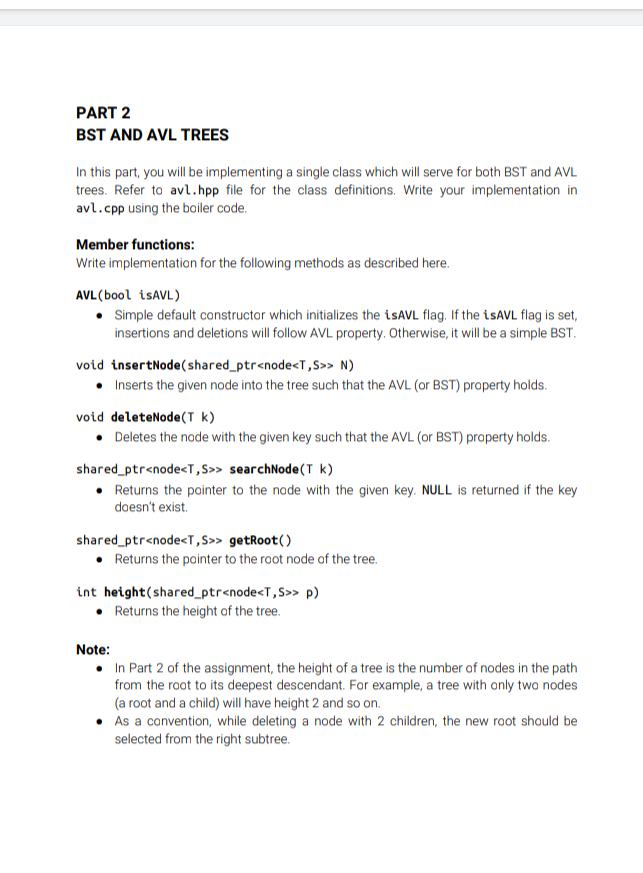Answered step by step
Verified Expert Solution
Question
1 Approved Answer
PART 2 BST AND AVL TREES In this part, you will be implementing a single class which will serve for both BST and AVL trees.

PART 2 BST AND AVL TREES In this part, you will be implementing a single class which will serve for both BST and AVL trees. Refer to avl.hpp file for the class definitions. Write your implementation in avl.cpp using the boiler code. Member functions: Write implementation for the following methods as described here. AVL (bool isAVL) Simple default constructor which initializes the isAvL flag. If the isAvL flag is set, insertions and deletions will follow AVL property. Otherwise, it will be a simple BST. void insertNode(shared_ptr
Step by Step Solution
There are 3 Steps involved in it
Step: 1

Get Instant Access to Expert-Tailored Solutions
See step-by-step solutions with expert insights and AI powered tools for academic success
Step: 2

Step: 3

Ace Your Homework with AI
Get the answers you need in no time with our AI-driven, step-by-step assistance
Get Started


